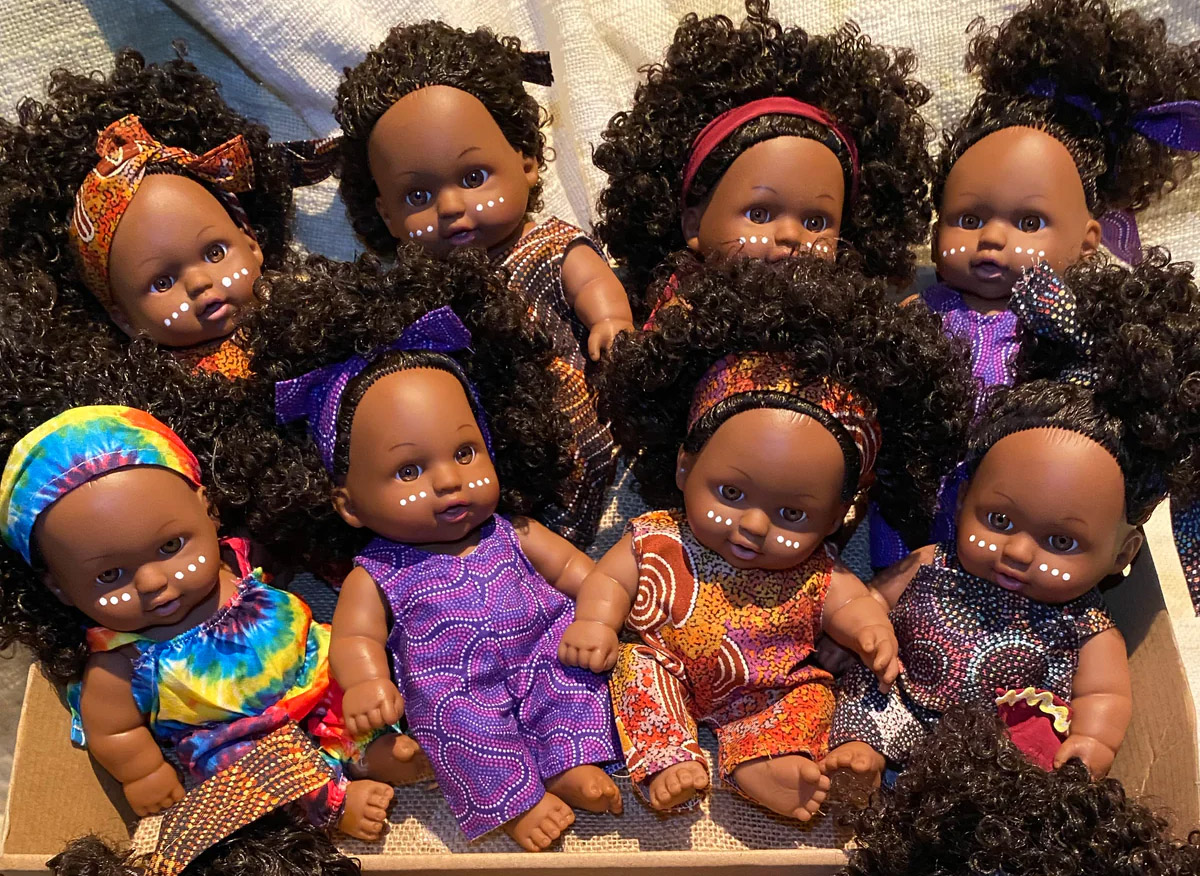
by fmadmin | Nov 7, 2023 | Strategy
Build a team of brand ambassadors: Five simple ways to promote your business and inspire others to do the same
When investing in business development, many brands fail to use the resources they’ve already got. To drive awareness and promote your brand in a highly competitive market, it is essential to leverage all resources available. This includes your team!
We’re not all natural-born salespeople, but we all have a personal brand, network, and individual expertise. By strategically harnessing this, brands can amplify their marketing without ballooning their budgets.
So, what is a brand ambassador?
Traditionally, a brand ambassador is engaged by an organisation to represent its brand, helping to increase brand awareness and drive sales. Ambassadors are often industry spokespersons, celebrities, sportspeople or influencers who embody the company’s corporate identity. Some may be compensated with free products, while high-profile ambassadors may make hundreds of thousands or millions for larger deals.
Brand ambassadors are a powerful tool for engaging your target audience, aligning your brand and building trust and credibility.
Well-known Australian brand ambassadors include:
- Qantas and Hugh Jackman
- Lexus and Emma Freedman
- Revlon and Delta Goodrem
And when you have a team of talented people, you have a set of individuals with their networks and expertise who share a vested interest in the success of your business.
We share five simple ways brands can empower and inspire their team to become brand ambassadors.
1. Empowering personal brands: a unique identity
Educate your team on personal branding. It’s more than just a buzzword. It’s the art of crafting your identity and narrating your story. Your personal brand is what people say about you when you’re not in the room.
Whatever an individual wants that to be is up to them, the key is that it’s intentional! More and more companies are encouraging individuality, promoting messages like “bring your whole self to work” — because they understand the value of authenticity.
Fictional characters are a great example of how clear motivations create memorable brands. For example, we all know Dr Evil doesn’t want to be known as a philanthropist and Mr Burns doesn’t lay awake at night hoping we remember him as a charitable boss.

Imaged sourced via Pinterest
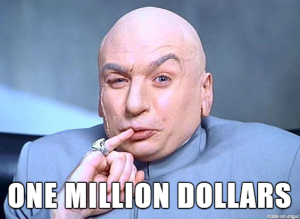
Image sourced via mathymoments.com
To harness your individuality (for good, not evil!) you can:
- Tell your story authentically: Be genuine and transparent in your interactions, letting your audience connect with the real you.
- Establish expertise: Position yourself as an authority in your field by sharing your knowledge and insights.
- Active community engagement: Be an active member of your business community, both online and offline. Engage with your audience genuinely, fostering relationships beyond just business.
2. Professional network: building relationships
A robust professional network opens doors to endless opportunities. If your team are not heavily sales-focused, then encouraging genuine connections may be more productive than pushing for sales. Here’s how:
- Attend networking events: Actively participate in industry events and networking meetups. Approach conversations with curiosity and a genuine interest in others.
- Online engagement: Leverage platforms like LinkedIn. Engage with professionals in your field, share experiences, and participate in discussions.
- Effective follow-ups: Take notes during meetings and follow up promptly. Personalise your follow-ups to express your interest.
3. Communications: be a storyteller
Communicating your brand’s story effectively and frequently will ensure your team can do the same. A few ideas include:
- Thought leadership: Write articles, white papers, or even books showcasing your team or brand’s expertise. Engage in public speaking and participate in interviews.
- Content creation: Create engaging content, be it videos, podcasts, or social media posts. Ensure consistency in your brand’s voice across all platforms.
- Social media engagement: Actively participate in social media campaigns, share company posts, and engage with your audience. Leverage the power of social media to amplify your brand message.
4. Events, conferences, and meetings: networking goldmines
Events are not just opportunities to showcase your brand but also to help your team learn, connect, and grow. Here’s how to make the most of them:
- Strategic planning: Set clear goals for each event. Research who will be attending and plan your approach accordingly. This may involve setting an intention to speak with people in a certain industry, or from a particular company.
- Elevator pitch: Craft an elevator pitch ready to go when you meet those people!
- Active promotion: Use social media to promote events. Share your experiences and include and tag the people you meet (with their consent) to create buzz around your brand’s presence.
5. Social media: your digital showcase
In our digital age, social media is a powerful tool for brand ambassadors. Here’s how you can utilise it effectively:
- LinkedIn optimisation: Create a professional and engaging LinkedIn profile for your brand and support your team to join too. Connect with industry professionals and share insightful content to establish your expertise.
- Content creation: Regularly create and share valuable content related to your industry. Engage with your audience through polls, Q&A sessions, and interactive posts.
- Consistent branding: Ensure your brand has a consistent visual appearance and tone of voice across all social media platforms – you’ll be more memorable!
Becoming a brand ambassador for your small business is not just about promoting products. It’s about building relationships, telling compelling stories, and establishing your network. Encouraging your team to build a reputable personal brand is a win-win for individual and business development.
By embracing these strategies, you can navigate the competitive business landscape with confidence, fostering meaningful connections that will drive your small business toward success. Remember, your brand is not just what you sell; it’s the story you tell and the relationships you build.
For more information and assistance about building a brand ambassador strategy, contact our team at Focused Marketing and make it happen!
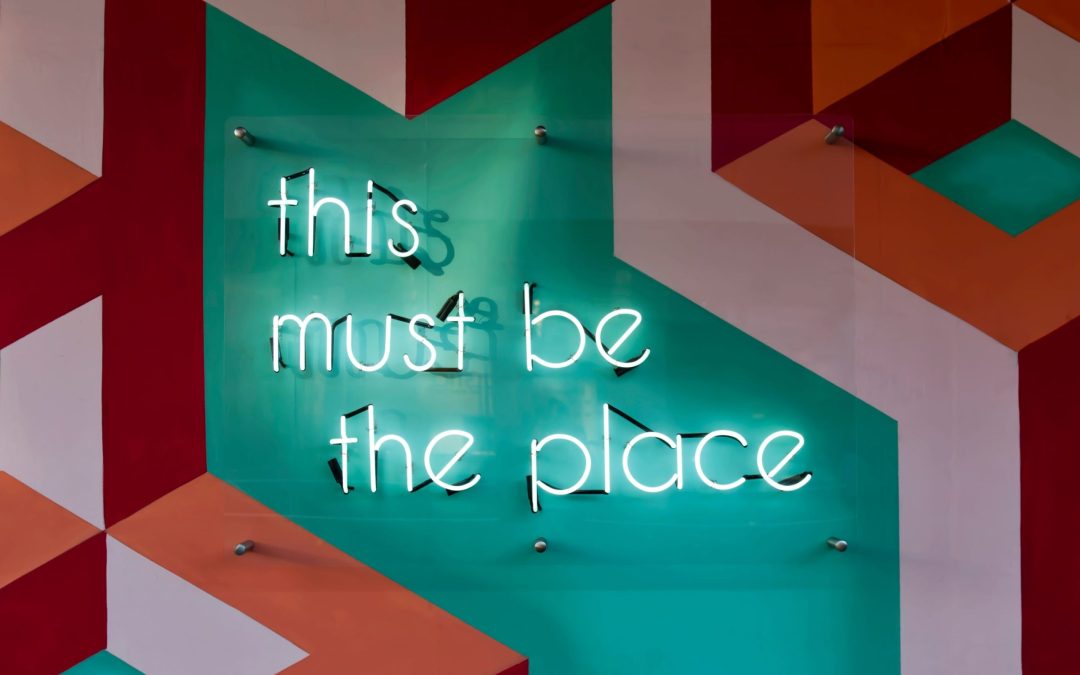
by fmadmin | Nov 6, 2023 | Content, Design, Digital
10 factors to consider when deciding who will build your website
So, you need a new website. Maybe you’re considering hiring a web developer, or perhaps you’re eager to invest in a full-service marketing agency.
An online presence is non-negotiable for any business, serving as your virtual storefront and the first interaction between you and your potential customers. At Focused Marketing, we are often approached by clients who want to create a new website but are wondering who to help them.
A full-service agency may be a larger upfront investment than hiring a web developer, but prices must be weighed up against which route will deliver the best value for money against your requirements. A developer and an agency can both build a website, but an agency will also ensure it does what it’s meant to – whether that be educating, engaging, or converting visitors into customers.
Below, we outline ten factors with crucial questions to ask when considering a developer vs. marketing agency. If you or your developer can’t answer these, you may need to talk to a marketing agency!
1. Goal-oriented conversion, customisation and optimisation
The first thing to consider is the purpose of your website. An agency will take the time to get to know your business and ensure it’s fit for purpose. Marketing agencies employ conversion optimisation techniques, encouraging actions that align with your business goals, be it making a purchase, completing a form, or subscribing to a newsletter. With a collaborative team of creatives – graphic designers, website developers, UX/UI specialists, and copywriters—they ensure that your online presence is visually appealing and optimised for a seamless user experience.
From layout and design to content and functionality, agencies customise every aspect of your website. Graphic designers create elements aligned with your brand identity, web developers ensure a responsive interface, UX/UI specialists focus on user experience, and copywriters craft persuasive content guiding visitors toward conversion actions.
Consider:
- What strategies are in place to continually refine and improve the conversion rate over time?
2. Capturing attention (within seconds)
You have about 8 seconds to capture the attention of a visitor before they leave your site. Marketing professionals within an agency understand this and will craft your website content to engage upon first glance.
“Users often leave webpages in 10 – 20 seconds, but pages with a clear value proposition can hold people’s attention for much longer. To gain several minutes of user attention, you must clearly communicate your value proposition within 10 seconds.” – Jakob Nielsen
Consider:
- Do you know how to optimise your homepage to deliver a compelling message?
- Are you using visual elements to resonate with your audience within those crucial seconds?

At 8 seconds, the average attention span is shorter than that of a goldfish
3. Creating lasting connections
Visual appeal is your secret weapon against fleeting attention spans. A design that is both unique and memorable ensures visitors don’t just pass through but forge a lasting connection with your brand. Think of your website as a visual storybook – each page should unfold a narrative that captivates and leaves a lasting imprint in the minds of your audience. Marketing agencies don’t create websites alone, they are experts at creating experiences that resonate.
Consider:
- To create a lasting impression, how will you ensure your website design is aligned with your brand guidelines?
4. Tailoring content for clarity and engagement
You might know your product inside-out, but struggle with effectively communicating the benefits it offers. A marketing agency not only creates or refines your content, but tailors it for your target audience.
Consider:
- Do you have a content strategy that will connect with your audience?
- How will you use content optimisation techniques to enhance search engine visibility and user engagement?
5. Ensuring accessibility and audience-centric writing
Creating content for an audience unfamiliar with your industry requires a delicate balance of education and persuasion. Many brands struggle to write for an audience who is unfamiliar with their products or services. Marketing agencies have the skills to bridge this gap, ensuring web content connects with the target audience. This extends beyond language – website design and content must be tailored to ensure accessibility for all users.
Consider:
- How well does your content resonate with your audience personas?
- What strategies do you use to tailor your messaging to different audience personas?
- How will you ensure content and web design is inclusive of all users?
6. Elevating your website from existence to discovery
A developer might build a functional website, but without on-page SEO, your site might get lost in the digital noise. Marketing agencies optimise your website for search engines, making sure your potential customers can find you.
“Think of your website as an island, metaphorically speaking. You may have a beautifully designed and constructed virtual destination, the only problem is your guests can’t find you on the map! Unless you provide a way for viewers to easily find and travel to your website, there is no point renovating it.” – Jessica Bye, Focused Marketing
Consider:
- Beyond the development phase, how will you optimise your website for search engines?
- How do you ensure your website is discoverable and easily navigable for your target audience?
7. Creating a seamless path to conversion
Every piece of information on your website should have a purpose and a placement. Understanding the path your visitors take is crucial in ensuring that every piece of information contributes to the overall user experience.
Marketing agencies strategically organise your content, guiding visitors through a journey that leads to conversion.
Consider:
8. Highlighting your brand’s USP through strategic messaging
Your unique selling proposition (USP) and key messaging must convince and compel your audience. Marketing agencies delve deep into understanding the intricacies of your business, conducting analysis to identify what distinguishes you from the competition.
Through understanding the nuances of your products, services, and values, a marketing agency will assist you in ensuring your value proposition shines.
Consider:
- Are you confident that your website effectively communicates your USP?
- How have you refined and communicated your USP to ensure that visitors understand what sets your business apart in the competitive landscape?
9. Creating an empowering user experience
We’ve all used websites that are unclear or downright frustrating. Visitors should effortlessly glide through your website, finding information intuitively and without friction. How visitors interact with your site greatly impacts their perception of your brand.
A marketing-focused approach optimises user experience, ensuring seamless navigation and encouraging visitors to explore further and ultimately convert. Marketing agencies employ user-centric design principles, strategically placing elements to guide visitors with clarity. This isn’t just about making navigation easy; it’s about creating an experience where visitors feel empowered and in control of their journey.
Consider:
- How will you design and evaluate your site’s visitor journey?
10. Your website is never finished!
The digital landscape is ever-evolving. A marketing agency doesn’t just build your website and leave; they continually analyse data, gather insights, and make improvements to ensure your online presence stays effective and competitive.
Consider:
- How will you continually improve your online presence? What measures will you use to respond to changing trends and user behaviour?
A developer can create a perfectly functional website, but it takes a marketing-focused agency to transform it into a powerful sales and branding tool. Remember, your website isn’t just a digital placeholder, it’s an interactive experience that can make or break your business. Invest wisely, because the right website isn’t an expense – it’s an investment in the future success of your business.
For more information and assistance with your marketing strategy, contact our team at Focused Marketing and make it happen!

by fmadmin | Oct 5, 2023 | Content, Design, Training
In honour of 10 years of everyone’s favourite accessible design platform, we’re sharing our top 10 tips and tricks for non-designers.
Canva’s simplicity, affordability and ease of use makes it an excellent tool in the belt for business marketing. However, many users don’t have a background in design and are learning on the fly, which means the quality of output suffers. While it’s worth investing in professional graphic design services, Canva definitely has its place – but please use wisely 😉
Here’s our top 10 tricks for beginners looking to harness the power of Canva for business purposes.
1. Use Brand Kits for consistency
Brand Kits are an excellent feature that is available to Canva Pro users. A Brand Kit is a style library of sorts that allows you to define your company logos, colour palette, fonts, and even photography, graphic elements, and icons. Brand Kits streamline the design process and make it easy to create consistent and on-brand designs that will strengthen your brand recognition and trustworthiness. (And earn you brownie points with your marketing team.)
- Consistency is key: Ensure that your designs align with your brand’s visual identity. If you look at a visual overview of your branded materials, does your design feel like part of the family?
2. Be conscious of spacing and alignment
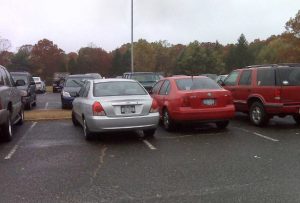
The guidelines are there for a reason! Watch out for spacing and alignment.
Image credit: Imgflip
Paying attention to spacing and alignment will make your designs appear more polished and professional.
- Are elements too close to each other, or the page edge? Use Canva’s built-in page margins to make sure key elements like text aren’t sitting too close to the edge of the page. Allow “breathing room” around elements so they don’t look too crowded.
- Are elements aligned to each other? Consistent alignment and spacing will make your design tidier and more unified. Use the “Position” tool in the top menu bar to easily align elements.
3. Create balanced designs
Learning to create visually balanced designs is a somewhat intuitional skill you’ll pick up over time.
- Do: Use a mix of left and right-aligned elements to help balance each other out. Centred layouts usually look best when everything is centred.
- Don’t: Use a mix of left, right, and centre-aligned elements as this tends to look messy.
4. Keep it simple
Canva is constantly rolling out new features and additional effects, filters and more. But try not to be tempted by all that seems cool and shiny, and always refer to your brand guidelines or Canva Brand Kit. Your friendly local graphic designer is begging you to PLEASE step away from that drop shadow or neon text effect. Simple designs are often the most impactful – and harder to mess up 😉
- Less is more: Stick to a clean design whenever possible, avoid cluttering your designs with unnecessary text or graphics.
- Choose a focal point: Highlight one central element or message in your design to make it stand out. Use colour, size, or positioning to draw attention to this focal point.
5. Typography matters
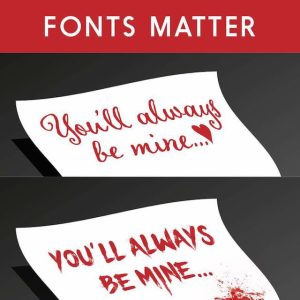
When font selection goes wrong. Stick to your brand fonts, always!
Image credit: Digital Synopsis
Typography can make or break a design.
- Stick to your brand fonts: Always refer to the font styles defined by your brand guidelines and don’t go astray with random fonts, no matter how much you like them!
- Create a clear typographical hierarchy: Use different weights and sizes for headings, subheadings and body text.
- Be mindful of readability: Make sure your text stands out against the background.
6. Keep your project library tidy
I know it’s boring, and we can all be guilty of letting our filing system slide – but keeping your designs organised will really help in the long term! It’s easy for your project library to become cluttered over time. When it’s challenging to find what you need quickly, design consistency can also take a hit.
- Create folders and group designs: I also like to keep related projects – e.g. a series of social posts for one month – all in one design with multiple pages, rather than making a new design each time.
- Use descriptive names for easy searching: Avoid vague titles like “Design 1” or “Untitled”, that’s not going to be helpful later on!
- Be ruthless about archiving and deleting: Archive designs you no longer need but want to be able to retrieve, and delete unused designs to streamline and free up space.
7. Get to know the basic shortcuts
Familiarising yourself with the commonly used shortcuts can do wonders for speeding up your workflow.
- Layers: Canva, like most graphics applications, works in a layering system where elements or groups of elements each sit on their own layer. With multiple overlapping elements on the page, it can become tricky to select and edit specific layers. One of my favourite shortcuts that’s often overlooked is Control + clicking on an element to select the one below. The shortcuts to Send Backward, Send Forward, Send to Back and Send to Front are also very useful.
- Copying elements: Option + clicking and dragging an element will make a copy, while Option + Shift + clicking and dragging an element keeps the copied element snapped in place vertically or horizontally which is great for keeping your design tidy.
- Grouping: Grouping objects together can also make designs easier to manage. Simply use Control + G and Control + Shift + G to group and ungroup.
8. Spell-check is magic
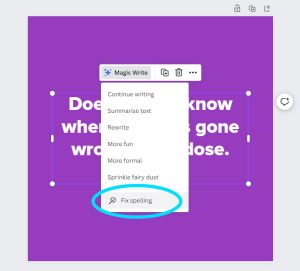
Make the most of Canva’s built-in spell-check feature.
This isn’t Canva-specific, but please, PLEASE keep an eye out for typos and grammatical errors in your designs. A business that consistently puts out content riddled with spelling mistakes comes across unprofessional.
- “Fix spelling” in Canva: This is a built-in spell-check tool offered by Canva. Simply select a text box, click Magic Write, then select “Fix spelling” from the dropdown menu. Abracadabra!
- Even the best magicians need an assistant: Get someone else to double check your design if possible. Sometimes even the most glaring of typos can slip past when you’ve been looking at a design for too long – so getting a second set of eyes is always a good idea.
9. Share and collaborate on your designs
Canva offers some great features for easy collaboration within your organisation or with external contributors (like your marketing/design team).
- Use a collaboration link: Use this to share your design with others. You can set the permissions so the other person can view only, can make comments, or they can edit the design – even those without a Canva account. Learn more about collaboration links here.
- For more advanced users: Teams of 2 or more can enjoy premium Canva features plus even better team collaboration features by upgrading to a Canva for Teams account. Check out the pricing plans here.
10. Learn from Canva’s Design School
Canva offers a library of courses and tutorials ranging from basic design principles to advanced techniques.
- Check out Design School: Click here to explore Canva’s educational resources.
Canva is a versatile and user-friendly design platform that can greatly benefit businesses of all sizes. By following our top tips for beginners and continuing to hone your Canva proficiency, you can create effective designs that strengthen your brand’s image. Happy designing!
If you need further Canva training, help with Canva templates, or would like to level up with professional design services, our experts would love to help. Get in touch with Focused Marketing today.
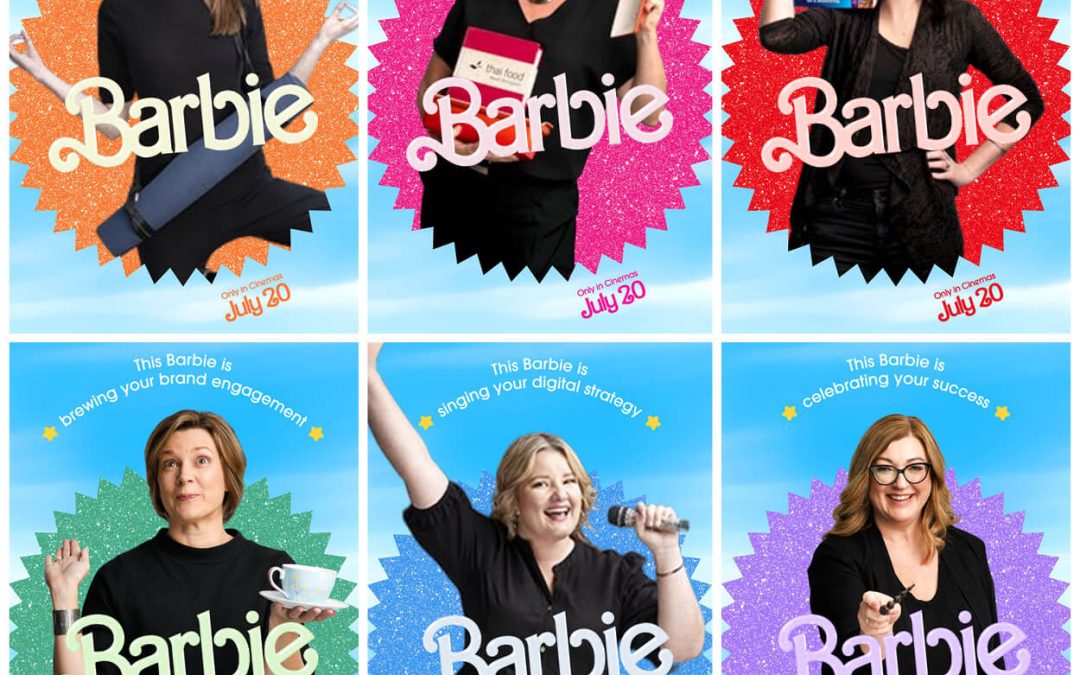
by fmadmin | Aug 1, 2023 | Content, Digital, Strategy
Amplify your marketing strategy with these simple yet effective marketing tactics from the Barbie movie campaign.
Barbie is officially the biggest movie of the year, bringing in a staggering $162m in America and over $330m worldwide in its opening weekend, according to Comscore.
Barbie, the iconic doll that has captured hearts for decades, has cast a spell on audiences worldwide with her sensational movie marketing campaign. The campaign’s success lies in its use of various strategic marketing techniques that, upon closer examination, can be embraced by any business.
From storytelling magic to cultivating a sense of community, here are 6 Barbie movie marketing tactics that can maximise any marketing initiative, regardless of your budget.
1. Create a compelling campaign narrative to drive engagement
To drive engagement, it is essential to prioritise storytelling over simple product/service promotion. Taking a more holistic approach, considering the overall experience and how each touchpoint can build a narrative will ensure a lasting impression on your target audience.
To do this, identify key strategic milestones in your marketing strategy and leverage your marketing activities and resources to build anticipation over your campaign period. Consider sneak peaks, teasers, and “easter eggs” to create excitement and drive curiosity.
Through the strategic timing of these moments, you can maximise your campaign messages and return on investment (ROI).
2. Tailor your marketing messages to your audience segments
In addition to creating a compelling narrative, gain a thorough understanding of each of your audience segments and tailor your marketing messages, channels, and efforts.
Effective audience segmentation requires thorough research, data analysis, and a deep understanding of consumer behaviour, so be sure to pay close attention to these.
Through audience segmentation, you can identify key segments that will drive a greater return on investment, as well as personalise their experience and ultimately achieve better results.
3. Integrate multi-channel marketing and new technology
The Barbie movie campaign employed a multi-channel marketing approach to maximise its impact. Leveraging traditional advertising methods, including television commercials, billboards, and print media, significant exposure was generated amongst both children and parents.
Additionally, the campaign embraced the digital age with a strong online presence, viral social media campaigns, and artificial intelligence including an online poster generator.
The Barbie movie marketing campaign focused on creating immersive experiences that extended beyond the cinema screen, including a free boat cruise party and Barbie’s Dreamhouse. This integration allowed the brand to connect with its audience wherever they were, fostering engagement and excitement around the movie. These initiatives not only encouraged fan engagement but also promoted user-generated content and social sharing, overall expanding the campaign’s digital footprint.
4. Promote strategic partnerships and collaborations
Understanding the significance of strategic partnerships, Barbie’s collaborative approach sparked a global sensation. Barbie collaborated with over 100 international brands including Barbie-themed ice cream, roller skates, and a Barbie Xbox. Partnering with recognisable brands and influencers not only enhanced the movie campaign reach and exposure, but also promoted a higher level of prestige and relevancy for the brand.
Look for strategic partnerships and collaborations that align with your brand and share similar values to extend your reach and target new audiences.
5. Evoke emotion and create a sense of community
Create content that encourages conversation. Offer unique perspectives, valuable insights, or entertaining experiences, to capture the attention of your audience. Engage with your audience by creating a sense of community. Host discussions, reply to comments, invite user-generated content and interactive elements.
The Barbie campaign amplified key social trends and topics including diversity, inclusivity, and empowerment. Fans were encouraged to share their Barbie stories, submit ideas, and engage in contests through social media platforms e.g. Barbie-core, #BarbieSummer.
This highly interactive approach not only generated excitement but also fostered a community of loyal and engaged Barbie enthusiasts, further amplifying the campaign’s message and impact.
6. Leverage the power of your brand
Barbie has a long-standing legacy as an icon of fashion, beauty, and empowerment for girls. The campaign capitalised on this by maintaining the core brand values and traditional brand identity, while the movie resonated with modern audiences with its progressive themes around feminism and inclusivity. A sense of nostalgia was created throughout the campaign period, with the brand visuals and references striking a chord with older audiences who fondly recalled the Barbie of their childhood.
What is unique to your brand and what does it stand for? Be authentic and consistent with your brand’s tone of voice and visual identity. Leverage the brand equity you have and amplify this across your marketing strategy.
Did you know… “Barbie” is estimated to have had a $150 million marketing budget, according to Variety (The Insider).
And while you may not have a casual $150m at your disposal like Barbie, you can leverage these marketing tactics in your next campaign and enjoy great results.
Looking for more information and assistance with your next marketing campaign? Contact us today and our team will be happy to Make It Happen!

by fmadmin | Jul 6, 2023 | Content

This NAIDOC Week, we’re celebrating the history, culture, and storytelling of Aboriginal and Torres Strait Islander creatives.
This year’s theme “For Our Elders” acknowledges that ‘across every generation, Elders have played, and continue to play, an important role and hold a prominent place in our communities and families.’
We’re furthering our knowledge and learning of the spirit, imagination, rich history, and connection to Country of First Nations Australian who lived in harmony with the land for millennia.
We acknowledge the Jagera people and the Turrbal people as the Traditional Custodians of the land on which we work – Meanjin (South Brisbane) and acknowledge that sovereignty was never ceded.
Here’s 5 ways to honour NAIDOC Week here in Meanjin.
1. Explore Brisbane City Council’s Indigenous Art Program
Brisbane City Council’s Indigenous Art Program showcases some of the most celebrated and widely recognised Aboriginal and Torres Strait Islander artists and their stories.
With over 80 artists exhibited to date, the program continues to celebrate and acknowledge Aboriginal and Torres Strait Islander people’s depth and strength of culture and understanding of the land called ‘Australia’.
Located throughout the Outdoor Gallery, this program transforms Brisbane’s streets and laneways into an exhibition of Aboriginal and Torres Strait Islander artworks in various places and spaces. The program is accompanied by a series of public events, including walking tours, artist talks and workshops.
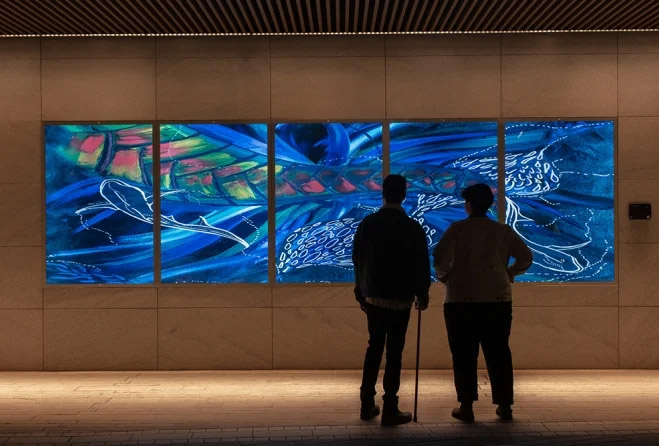
Reflections: A Reflection of Brisbane’s Waterways. Image credit: Must Do Brisbane
As part of this year’s program, an exhibition titled Reflections: A reflection of Brisbane’s waterways highlights the Brisbane River’s beauty, significance, and sustainability – through artwork by emerging and established Aboriginal and Torres Strait Islanders who call Meanjin (Brisbane) home.
Explore the beauty of the river’s complex creeks, tributaries and ancestral traditions. This exhibition showcases the river as a source of sustenance, security, social network and cultural heritage.
View the public events for this year’s Indigenous Art Program.
2. Visit Birrunga Gallery
Wiradyuri man, Birrunga Wiradyuri, is the founder and principal artist of the multi-award winning Birrunga Gallery.
A vibrant collection of contemporary Indigenous art awaits at the Birrunga Gallery on Adelaide Street, Meanjin (Brisbane City). Immerse yourself in the rich cultural heritage and celebrate the artistic legacy of Australia’s First Nations people. Showcasing the talents of Aboriginal and Torres Strait Islander artists, this gallery features a diverse range of paintings, sculptures, and more.
View Birrunga Gallery and Cafe’s website.
3. Check out Open House in West End
Open House is a retail space that showcases local makers, First Nations fashion, Indigenous products, wearable art and more.
Open House is one of our favourite stores in West End that brings art and fashion together with a focus on sustainable fashion from local makers, Aboriginal art, and engaging workshops.
Stocking fabrics, fashion, jewellery, zines and more – at Open House you can pick up a gift and support First Nations creatives and labels including Magpie Goose, Haus of Dizzy, Chaboo Designs, Brush and Wheel, Papa Drew, Katalyst Design, Nelson Molloy, Elk & Ina and more. Open House also features regular exhibitions focused on Aboriginal art curated by Blaklash Projects.
View Open House on Instagram.
4. Pay it forward by gifting a child a Jarjum doll
Dreamtime Aroha are a self-funded start-up driven by a heartfelt mission. Their Jarjum dolls are made in Meanjin and loved by Mob everywhere.
Founders Tidda J and Cuzzie B’s were inspired to create dolls that represented their families and friends. After extensive research and YouTube tutorials, they acquired a sewing machine and sourced fabrics from all over Australia to design their own dolls. Jarjum dolls are adored by kids and their business is driven by purpose.
‘What we make matches what we give away. The money we make on sales goes back into materials to make more so we can continue to send the babies out to kids.’
You can purchase a Jarjum doll or pay it forward by donating towards dolls to be gifted to the community here, starting from $5.
5. Follow Aunty Munya Andrews (Aboriginal Elder and educator)
Regarded as a leading Australian thinker, Aunty Munya Andrews is an Indigenous author and barrister.
Munya’s life purpose is ‘to create a better understanding and appreciation of Aboriginal people, leaving behind a legacy of Dreamtime wisdom for generations to come’.
Through her business Evolve Communities, Aunty Munya provides a range of in-person cultural awareness training programs, coaching and events about Aboriginal culture.
Add cultural commentary, history, and facts to your LinkedIn feed by following Aunty Munya Andrews.
How will you celebrate NAIDOC Week this year? For more information, check out naidoc.org.au.
















